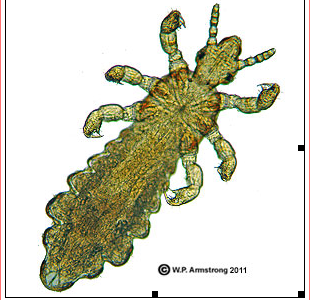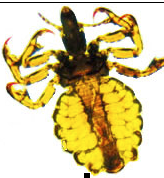
|
|
from http://waynesword.palomar.edu/lmexer3b.htm#lice
12. Using Lice DNA To Date The First Clothing Worn By People
One of the most novel uses for DNA sequencing is the determination of when humans first began wearing clothing. According to Mark Stoneking and his colleagues at the Max Planck Institiute for Evolutionary Anthropology in Leipzig, Germany, we started wearing clothing about 70,000 years ago. This date is based on genes of human sucking lice. It correlates with the approximate time when the body louse evolved from the human head louse and corresponds to the time when the body louse's habitat (clothing) became widespread. This is also the time when Homo sapiens sapiens began moving out of Africa into cooler regions of Europe.

|
|
Stoneking and his colleagues Ralf Kittler and Manfred Kayser compared mitochondrial DNA sequences from head and body lice. The greater the difference in sequences between the two forms of lice, the older their evolutionary split. Human lice from Africa are more genetically diverse than lice from other parts of the world, indicating that the species originated in Africa. Head lice are more diverse than body lice, showing that they are the older group. By comparing the mitochondrial DNA of body lice to chimpanzee lice, Stoneking's team was able to approximate the origin of body lice to around 70,000 years ago. This date correlates well with the growing evidence that modern humans evolved in Africa and migrated northward around 100,000 years ago.

|
Stoneking is also studying human crab lice (Pthirus pubus) which typically inhabit pubic hair. Human pubic lice are more closely related to gorilla lice than to head lice. Since this sucking louse only inhabits hairy places on the body, it might shed some light on when humans lost their heavy body hair. Crab lice are typically transferred from person to person through sexual intercourse, although they may also be picked up from infested linen, clothing and other sources.
|
|
For More Information About The Origin Of Body Lice:
|